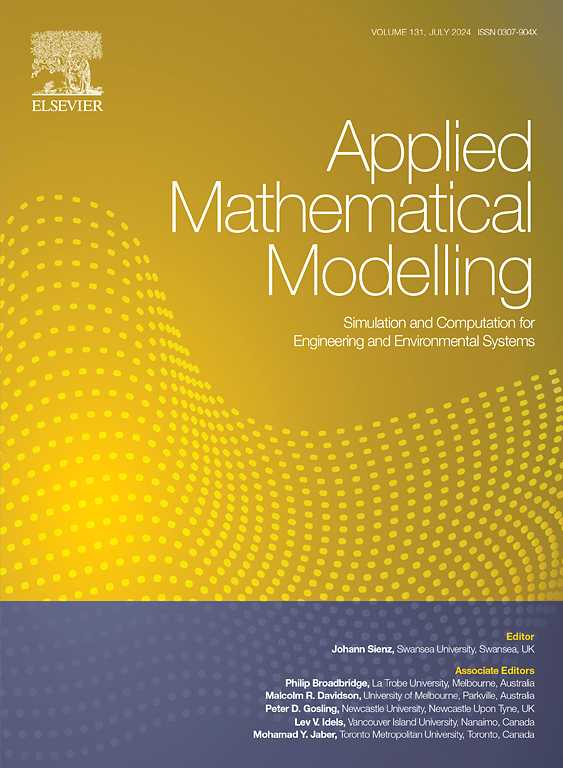Dynamic-spread assessment and kink detection in the early mpox outbreak
IF 4.4
2区 工程技术
Q1 ENGINEERING, MULTIDISCIPLINARY
引用次数: 0
Abstract
This paper proposes a varying coefficient Susceptible-Exposed-Infected-Removed (vSEIR) model to dynamically simulate the early mpox epidemic. We incorporate a time-varying infection rate and smallpox vaccination protection to capture real-time changes in transmission influenced by non-pharmaceutical interventions, setting our work apart from studies relying on fixed rates. To this end, we apply the recursive least squares algorithm with a forgetting factor for real-time identification of time-varying infection rate. The sparse Hodrick-Prescott (HP) filter, tuned with leave-one-out cross-validation, captures mpox epidemic kinks via the effective reproduction number obtained from the discrete vSEIR model. This allows for accurate segmentation of epidemic phases, better evaluation of intervention effectiveness, and insights that can guide preparedness for future possible outbreaks. We analyze the mpox and COVID-19 outbreaks in four countries using the proposed kink-based framework. The results show that the mpox epidemic generally entered its decline phase earlier than COVID-19, despite weaker interventions. Additionally, the early mpox epidemic exhibited more inflection points compared to the early COVID-19 pandemic, reflecting stronger non-pharmacological controls during the latter. Sensitivity analyses further indicate that mpox infections would have increased by 12% without smallpox vaccination, and data uncertainty significantly impacts estimates. Finally, our proposed systematic framework can also be extended to other early outbreaks of human-to-human epidemics, especially in the absence of reliable medical data on contact rates.
求助全文
约1分钟内获得全文
求助全文
来源期刊

Applied Mathematical Modelling
数学-工程:综合
CiteScore
9.80
自引率
8.00%
发文量
508
审稿时长
43 days
期刊介绍:
Applied Mathematical Modelling focuses on research related to the mathematical modelling of engineering and environmental processes, manufacturing, and industrial systems. A significant emerging area of research activity involves multiphysics processes, and contributions in this area are particularly encouraged.
This influential publication covers a wide spectrum of subjects including heat transfer, fluid mechanics, CFD, and transport phenomena; solid mechanics and mechanics of metals; electromagnets and MHD; reliability modelling and system optimization; finite volume, finite element, and boundary element procedures; modelling of inventory, industrial, manufacturing and logistics systems for viable decision making; civil engineering systems and structures; mineral and energy resources; relevant software engineering issues associated with CAD and CAE; and materials and metallurgical engineering.
Applied Mathematical Modelling is primarily interested in papers developing increased insights into real-world problems through novel mathematical modelling, novel applications or a combination of these. Papers employing existing numerical techniques must demonstrate sufficient novelty in the solution of practical problems. Papers on fuzzy logic in decision-making or purely financial mathematics are normally not considered. Research on fractional differential equations, bifurcation, and numerical methods needs to include practical examples. Population dynamics must solve realistic scenarios. Papers in the area of logistics and business modelling should demonstrate meaningful managerial insight. Submissions with no real-world application will not be considered.
 求助内容:
求助内容: 应助结果提醒方式:
应助结果提醒方式:


